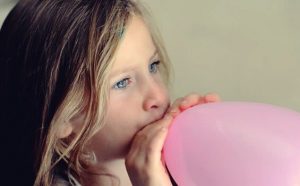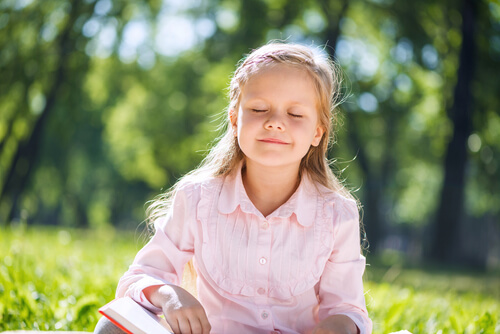The Balloon Technique for Calming Nervous Children

Many parents use the balloon technique to help their children remain calm under pressure. This is a simple game that teaches deep breathing and helps kids manage stress in their everyday lives.
Childhood is a time of new experiences. Some of these may be frightening for young children.
Fortunately, there are many strategies and tools that can help children learn how to relax in stressful situations.
Children aren’t born with the ability to calm themselves when they’re upset. As they grow up, they look to their parents for comfort. Kids learn by example and discover techniques that work for them.
The balloon technique is one of these methods. It teaches deep breathing to help your child calm down.
But what is deep breathing, and why is it so important?

Deep breathing
Deep breathing is a technique that teaches children to reduce the speed of their breathing when they’re anxious or afraid.
This technique may help reduce your child’s anxiety and make them feel like they’re in control. Breathing is closely connected to the nervous system.
This means that breathing deeply helps relax the muscles and calm the mind. The balloon technique is one way to teach children how to breathe correctly to reduce stress during difficult moments.
How the balloon technique can calm a nervous child
The balloon technique works to calm anxious children. It is a very effective method for deep breathing, and can be used with children who have difficulty controlling their impulses.
Keep in mind that this is a game that should be fun for children, as well as teaching them about how their lungs work and how to control them.
How it works
This is a very simple exercise. You’ll need some balloons. Inflate one, explaining to your child that, just like the balloon, people become very tense when they’re nervous.
The balloon analogy is ideal for teaching children how their body works. Tell your child to imagine that their lungs are balloons. When they’re nervous, they fill up with air.
“Breathing is the first act of life and the last. Our very life depends on it. Since we cannot live without breathing it is tragically deplorable to contemplate the millions and millions who have never learned to master the art of correct breathing”
-Joseph Pilates-
The first thing that your child should do is hold a deflated balloon to their lips. Next, they inhale deeply through the nose and then breathe out into the balloon.
As they exhale, the child should try to inflate the balloon as much as possible. Repeat this for five deep breaths, never removing the balloon from their mouth.
If your child feels dizzy, however, they should stop.
Once the balloon is full of air, it is also a good idea to deflate it slowly. This will show your child how they can control their breathing. Most children take rapid, shallow breaths when they’re nervous.
For children who are prone to anxiety, use this exercise twice a day to improve the health of their lungs. Once in the morning and once before bed is ideal.

Objectives
The balloon technique allows children to:
- Get to know their own body
- Learn to relax under pressure
- Control their impulses
- Enter a calm state of mind
- Stay in control of anxiety-inducing situations
Advantages
This method has several advantages for children who tend to become anxious:
- It increases lung capacity
- It exercises the muscles of the diaphragm in addition to the lungs themselves
- This technique alleviates dyspnea or the sensation of shortness of breath
- Improper breathing is linked to disorders of speech, vocalization and articulation of sounds
- The balloon technique strengthens the muscles of the lips by repeatedly blowing up balloons
What’s more, this game provides one more important parallel with real life. Just like the over-inflated balloon, if we don’t let off some air, we’re at risk of bursting.
If we let anxiety take over our bodies, in the end, we won’t be able to stand the pressure.
This text is provided for informational purposes only and does not replace consultation with a professional. If in doubt, consult your specialist.



